From Ryan Broderick’s comments on the state of text based social media, a new life goal for me: “One day you’ll be the last person writing words on the web and wonder where everyone went.”



This site is made possible by member support. ❤️
Big thanks to Arcustech for hosting the site and offering amazing tech support.
When you buy through links on kottke.org, I may earn an affiliate commission. Thanks for supporting the site!
kottke.org. home of fine hypertext products since 1998.
Mass Deportations, a Culture of Denunciation, and an Altered America
Historian Timothy Snyder (On Tyranny), who studies forced population movements, thinks we aren’t taking the Trump/Vance deportation plans seriously enough. (I agree.) The effects will be familiar to anyone who has read anything about totalitarian regimes and/or caste-based societies (like these very United States):
An attempt to rapidly deport twelve million people will also change everyone else. As Trump has said, such an action will have to bring in law enforcement at all levels. Such a huge mission will effectively redefine the purpose of law enforcement: the principle is no longer to make all people feel safe, but to make some people unsafe. And of course the diversion of law enforcement resources to deportation means that crimes will not be investigated or prosecuted. So some people will be radically less safe, but everyone regardless of status will in fact be less safe.
Such an enormous deportation will requires an army of informers. People who denounce their neighbors or coworkers will be presented as positive examples. Denunciation then becomes a culture. If you are Latino, expect to be denounced at some point, and expect special attention from a government that will demand your help to find people who are not documented. This is especially true if you are a local civic or business leader. You will be expected to collaborate in the deportation effort: if you do, you will be harming others; if you do not, you risk being seen as disloyal yourself. This painful choice can be avoided not at a later point but only now, by voting against mass deportations.
The Trump campaign is telling us straight out that this is their plan — they are not hiding it! at all! — and historians are letting us know what has happened in similar situations in the past and it’s just not all that confusing or complicated to understand. Even if they try and don’t succeed, it’s going to be absolutely brutal. Those are the stakes.
The Very Real Scenario Where Trump Loses and Takes Power Anyway. 100%. My feeling is that it’s been months since his campaign was about winning the election — they’re focused on the coup endgame.
Stunt City
This TV ad is from 2006 but I don’t think I’ve ever seen it before. It’s so good though…no reason a deodorant commercial has to go this hard!
My 17-year-old took this Street Survival driving skills course this weekend and I recommend it! They learn how to handle their own car, how it feels to stop fast, corner fast, etc. You can see the kids level up their driving throughout the day.
Free Rothko

From French street artist OakOak, a reminder that art is everywhere and that art comes from everywhere. From their website and Instagram, here are a few more pieces that caught my eye:



And ha, I just noticed this one, a riff on Hokusai’s The Great Wave.
A new concept album by Lin-Manuel Miranda & Eisa Davis is a musical based on the 1979 movie The Warriors and “sung by a cast that includes everyone from artists like Lauryn Hill, Nas, Ghostface Killah and Billy Porter to Broadway stars Phillipa Soo…”
The Secretive Dynasty That Controls the Boar’s Head Brand. Somehow, not even the CFO seems to know who the CEO of Boar’s Head is. Wild. “Be forewarned: There are a lot of Bobs and Franks in this story.”
A program that pays farmers to flood their fields to create “pop-up wetland habitats” as way-stations for migratory birds is a “rare conservation win”.
Walt Whitman: “I am large, I contain multitudes.” Marissa Mayer: “I Am Not a Feminist. I Am Not Neurodivergent. I Am a Software Girl.”
Early 90s SNL Graphic Parodies



Marlene Weisman was a graphic designer for Saturday Night Live from 1988–1994, which is the sweet spot of when I was really into the show. So this interview with Weisman by Steven Heller is right up my alley.
I did have a close working relationship with Mike Myers, who basically wrote his own sketches and would come down to our art department to talk to me about the graphics. He wanted to approve everything himself. He was very specific in what he wanted, and I truly enjoyed working with him.
I clicked with him on where he was coming from creatively. I loved establishing the Euro-style SPROCKETS graphics for him, and creating all his Simon drawings for that series of his sketches, which was really fun. As someone with a similar passion for UK ’60s pop culture, I also loved drawing and creating the title sequence for his “1960s Movie” sketch, which I have a hunch was the seed of the idea for his Austin Powers movies!
You can check out more of Weisman’s SNL work on her website and see some of the graphics she helped create in classic sketches like Colon Blow, Toonces the Driving Cat, Happy Fun Ball, Wayne’s World, and Sprockets.
See also Creating Saturday Night Live’s Cue Cards. (via chris glass)
Foursquare is shutting down their city guide app and website. Sad but I hope this is true: “Foursquare is focused on building even better experiences for you in Swarm.” (I love Swarm and use it every day still.)
Strolls with stops use more energy than continuous walking, scientists show. “Researchers show more energy needed to get going than later in walks when body is working more efficiently.” 20-60% more oxygen use in bursty tests of stair-climbing.
Polostan: Volume One of Bomb Light: A Riveting Historical Epic of International Espionage, Intrigue, and the Dawn of the Atomic Age. I haven’t read every Neal Stephenson book, but I’ve loved those I have (incl. Seveneves).
Artfully Arranged Junkyard Objects




In a continuation and tweak of his Coletivos project (which I posted about previously), Cássio Vasconcellos took aerial photos of scrapyards and arranged the junked cars, planes, trains, and other objects into dense photographic collages.
OVER presents a scenario that seems to point to a dystopian future, but which, in fact, brings together fragments of the present. The exaggerated agglomeration denounces the misleading idea of “disposal”, given that objects do not cease to exist in the world when we throw them away. Rather, they inhabit other places.
This video shows the artist’s process, from hanging out the side of a helicopter to arranging all the items in Photoshop.
Is It Perimenopause or the Fascist Death Knell of Late-Stage Capitalism? “Is my hair thinning, or am I ripping it out because a thirty-four-time convicted, sexually abusive steak salesman with a Hannibal Lecter fetish is five points ahead in Arizona?”
Loving that the FTC has adopted a click-to-cancel rule. “Under the rule, businesses can’t force customers to cancel a subscription using a method different from how they signed up.” So if you sign up online, they can’t force you to call to cancel. 🙌
Redbox went bankrupt and abandoned their DVD lending machines. Tinkerers have hacked the OS, procured machines from the likes of Walgreens, and hauled them home to repurpose or to get at the sweet, sweet fruit within (aka the DVDs).
The Biden administration has cancelled $175 billion in student debt for almost 5 million people since Jan 2021. Could have done much more than that if not for Republicans suing to keep people in debt.
This mashup of Y.M.C.A. by the Village People and a track from Hans Zimmer’s Inception soundtrack should not work as well as it does. “Young man, young man” (plaintive).
A Weird Form of Dark Energy Might Solve a Cosmic Conundrum. “Estimates of how fast the universe is expanding disagree. Could a new form of dark energy resolve the problem?” (Written by two experts on dark energy.)
How Cranberries Are Harvested
This video seems like it was made specifically for kottke.org. In the first half of it, you learn how cranberries are harvested. In the second half, there’s gorgeous HD slo-mo footage of wakeskating through a cranberry bog.
And with a Tycho soundtrack no less…it’s all too perfect. (via ★interesting)
Supreme Court Rules 6-3 To Open Evil Tomb Of Batibat. “Contemporaneous accounts provide no evidence the Founding Fathers envisioned a role for the federal government in vanquishing this unholy entity from the face of the earth.”
Ok, this is a genuinely shocking thing to hear: “There is a new species of shark or shark relative (skate, ray, or chimera) discovered approximately every two weeks.” —shark expert David Shiffman
The Binary Game tests you on quickly converting numbers from binary to decimal and from decimal to binary, from 0 (00000000) to 255 (11111111). “Before long you’ll be doing these conversions in your head.” My son turned me onto this — it’s fun!
“New research documents accelerating plant growth on the Antarctic Peninsula and nearby islands.” 8000 sq ft of vegetation 40 years ago has grown into 4.6 sq miles.
Ravioli and Other Ravioli-Shaped Objects
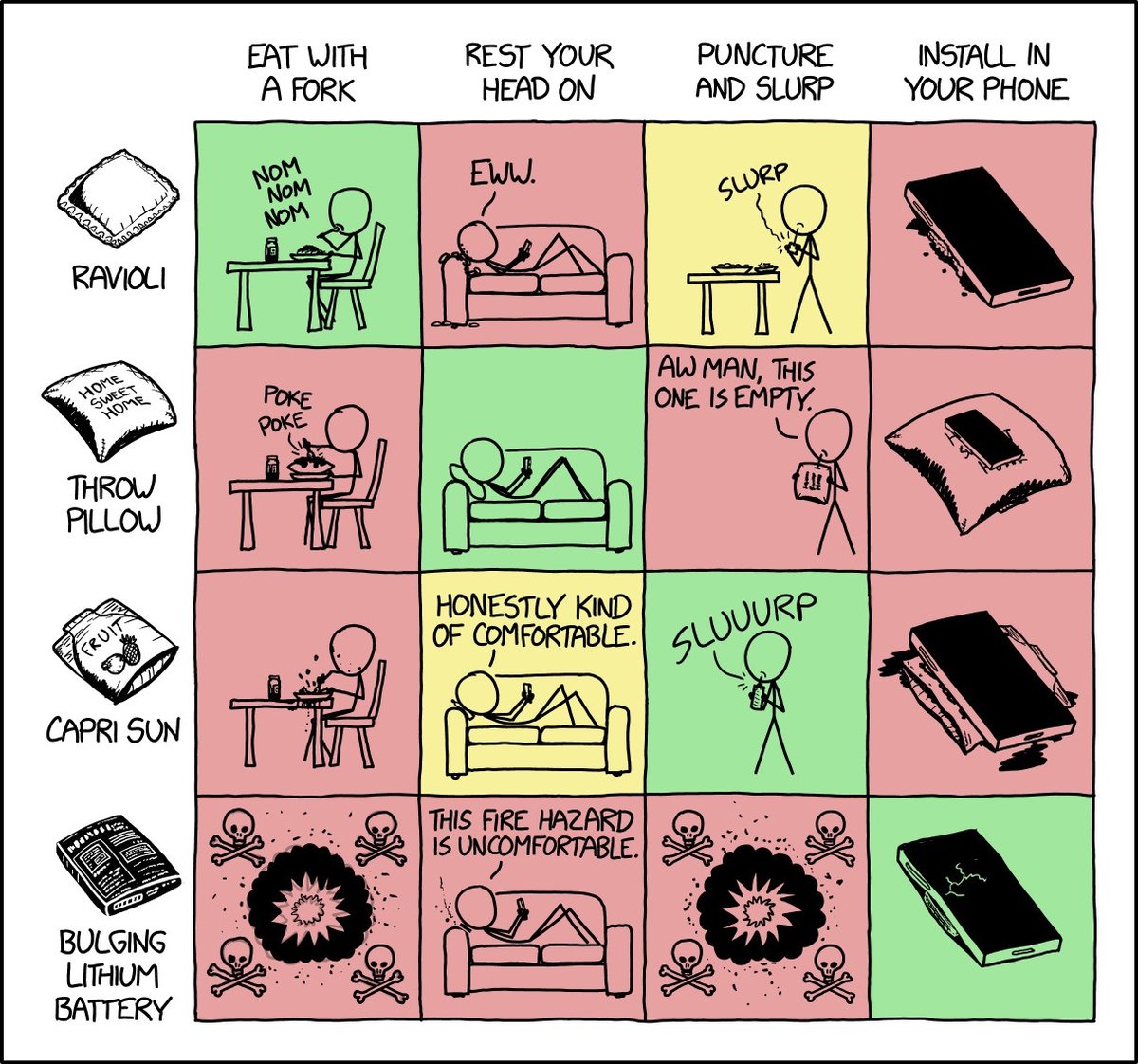
From XKCD: Ravioli-Shaped Objects. See also The Cube Rule of Food, the Grand Unified Theory of Food Identification.
Ooh, a Color Kindle Is Finally Here

I think this counts as a FINALLY! Amazon is coming out with a full-color e-reader called the Kindle Colorsoft. You can pre-order it now for $280 and it ships on October 30. This will be great for comics, graphic novels, and books with art & photography. I am a committed ebook reader and it’s always been disappointing to view photos on the Kindle…they look like they were faxed from the Voyager space probe or something.
As it happens, I’m in the market for a new e-reader — I lost my Kindle Paperwhite a few weeks ago and haven’t replaced it (partially because I’m in the midst of an actual paper book right now but mostly because I am stubbon and don’t want to believe I have become the sort of person who loses things — my driver’s license also went missing recently). Anyway, I’m trying to decide between the Colorsoft ($280), the Boox Palma (aka the Gentle Librarian, also $280), or getting the new & improved Paperwhite (faster, bigger screen, thinner, higher contrast, $160). Hmm…
A Bonkers Japanese Skateboarding Show
Kasso is a Japanese game show that’s like a skateboarding version of Ninja Warrior. A group of skaters is challenged to navigate a series of obstacle courses that require the street and park skating skills. Some of the obstacles are truly diabolical — to get the gist, check out these videos:
You can catch more of Kasso on their YouTube channel. (via @mathowie)
Reader favorites from 20 years of the NY Times’ popular Modern Love column. “Knowing that someone else had walked this same, very scary path gave me a sense of comfort, which I was then able to pass on to others.”
Abortion Bans Have Made Miscarriages More Dangerous
A comic by Aubrey Hirsch: Miscarriages are incredibly common. Abortion bans have made them less safe.

Jimmy Carter cast his mail-in ballot for Kamala Harris today, two months after stating he wanted to live long enough to do so. Carter was born when Calvin Coolidge was president and was first eligible to vote in the 1948 election (Truman vs Dewey).
Hearing Things is a new site featuring independent music journalism. It was founded by former Pitchfork staffers and will be member-supported.
LCD Soundsystem x Miles Davis
So first of all, this mashup of LCD Soundsystem’s New York, I Love You But You’re Bringing Me Down and a recording of Miles David from his Elevator to the Gallows score is just great to listen to musically. But the, let’s call it choreography, is brilliantly spare: a pair of YouTube videos pulled up side-by-side in a now-ancient Safari browser and pressing play to sync them by hand — jazz-like, improvisational.
If you’d like to try this yourself, here’s the LCD Soundsystem and Miles Davis videos; just press play on the David video at 32 seconds into the LCD video.
See also New Yorker film critic Richard Brody on Louis Malle’s “Elevator to the Gallows,” and Its Historic Miles Davis Soundtrack. (via James Risley in the Kottke comments)
Ugh, these undecided hobbits! “Both Galadriel and Sauron say the other is a threat to Middle-earth. One has to be wrong, so whom am I to trust?”
Abortion: Our Bodies, Their Lies, and the Truths We Use to Win is a NY Times bestseller from Jessica Valenti, who “provides the language, facts, and context readers need to feel confident when talking about the attacks on their bodies and freedom”.
Apollo 16 Lunar Rover Dash Cam
I had no idea there was footage shot on the Moon from the perspective of a lunar rover passenger…basically a lunar rover dash cam. It’s the second half of this short video. Amazing. The first part shows the rover speeding off (at about 6 miles/hr), being put through its paces. From the transcript of the “Grand Prix”:
124:58:52 Duke: The suspension system on that thing is fantastic!
124:58:54 England: That sounds good. We sound like we probably got enough of the Grand Prix. We’re willing to let you go on from here. Call that a (complete) Grand Prix.
124:59:03 Duke: Okay. (Pause) Man, that was all four wheels off the ground, there. Okay. Max stop.
124:59:12 Young: Okay. I don’t want to do that.
124:59:13 Duke: Okay. Excuse me.
124:59:16 Young: They say that’s a no-no.
124:59:22 Duke: Okay, DAC off; Mark. Okay, John. DAC’s off.
124:59:27 Young: Okay. I have a lot of confidence in the stability of this contraption.
124:59:30 Duke: Me, too.
124:59:32 England: Sounds great.
Also, we took a fucking car to the Moon! Three times!
This is Cabel Sasser’s XOXO talk. Best not to know anything going into it…just watch all the way to the end. “Don’t waste this. Keep everyone guessing. Make me proud.”
POSSE (Post (on) Own Site Syndicate Elsewhere) has been my strategy for years now. “A simple technique offers the best of both worlds: total control over your own work, while still maintaining a presence on third-party platforms.”
Bookshops are cool again! Booksellers have “noticed a sharp rise in young readers coming into their shops seeking out human guidance, eager to be in a physical store rather than filtering through AI and influencer-recommended titles online.”
Season Two of Silo
The trailer for season two of Silo, which starts on Apple TV+ on November 15. It doesn’t reveal much but I am excited to watch the new season! (No spoilers please from folks who have read the books.)
These solidly middlebrow shows like Silo, The Diplomat, and The Gilded Age are some of my favorites to watch these days because they are well-produced with quality actors but don’t tax the viewer (ok, me…they don’t tax me) as much as more serious fare like Shōgun, My Brilliant Friend, Severance, or Chernobyl (all of which I love to bits but sometimes feels like eating your vegetables, if you know what I mean). But a good media diet is a varied media diet and stuff like Silo is really hitting the spot for me right now.
From Robin Wall Kimmerer (author of Braiding Sweetgrass), a new book called The Serviceberry: Abundance and Reciprocity in the Natural World, in which “she considers the ethic of reciprocity that lies at the heart of the gift economy”.
There’s no guarantee that the Earth’s natural carbon sinks (ocean, plants, soil) will continue to work the way they have in the past. Last year for instance, “forest, plants and soil — as a net category — absorbed almost no carbon”.
Charles Schulz on Being a Good Citizen
In 1970 as part of a class project, 10-year-old Joel Linton wrote to Peanuts creator Charles Schulz to ask him, “What do you think makes a good citizen?” Schulz replied with this letter:

The letter reads:
Dear Joel:
I think it is more difficult these days to define what makes a good citizen then it has ever been before. Certainly all any of us can do is follow our own conscience and retain faith in our democracy. Sometimes it is the very people who cry out the loudest in favor of getting back to what they call “American Virtues” who lack this faith in our country. I believe that our greatest strength lies always in the protection of our smallest minorities.
Sincerely yours,
Charles M. Schulz
Schulz’s widow Jean Schulz wrote of the letter:
The letter turned up recently, and the answer must have startled Mr. Lipton by how appropriate the answer would be if written today.
I always saw Sparky as a great believer in the long flow of history — that the people of the world had seen improvements over the centuries, and that, as he says in his letter, “our greatest strength lies always in the protection of our smallest minorities.”
The way mainstream media covers Trump and the GOP is fatally flawed to the point of being inaccurate. “They stumble over and over to convey what is actually happening. Why can’t legacy media say clearly what he’s doing on a consistent basis?”
Ward Christensen, BBS inventor and architect of our online age, dies at age 78. “Friends and associates remember Christensen as humble and unassuming, a quiet innovator who never sought the spotlight for his groundbreaking work.”
Ed Yong on Breaking Down and Putting Yourself Back Together
My favorite presentation at XOXO this year was Ed Yong’s talk about the pandemic, journalism, his work over the past four years, and the personal toll that all those things took on him. I just watched the entire thing again, riveted the whole time.
Hearing how thoughtfully & compassionately he approached his work during the pandemic was really inspirational: “My pillars are empathy, curiosity, and kindness — and much else flows from that.” And his defense of journalism, especially journalism as “a caretaking profession”:
For people who feel lost and alone, we get to say through our work: you are not. For people who feel like society has abandoned them and their lives do not matter, we get to say: actually, they fucking do. We are one of the only professions that can do that through our work and that can do that at scale — a scale commensurate with many of the crises that we face.
Then, it was hard to hear about how his work “completely broke” him. To say that Yong’s experience mirrored my own is, according to the mild PTSD I’m experiencing as I consider everything he related in that video, an understatement. We covered the pandemic in different ways, but like Yong, I was completely consumed by it. I read hundreds(/thousands?) of stories, papers, and posts a week for more than a year, wrote hundreds of posts, and posted hundreds of links, trying to make sense of what was happening so that, hopefully, I could help others do the same. The sense of purpose and duty I felt to my readers — and to reality — was intense, to the point of overwhelm.
Like Yong, I eventually had to step back, taking a seven-month sabbatical in 2022. I didn’t talk about the pandemic at all in that post, but in retrospect, it was the catalyst for my break. Unlike Yong, I am back at it: hopefully more aware of my limits, running like it’s an ultramarathon rather than a sprint, trying to keep my empathy for others in the right frame so I can share their stories effectively without losing myself.1
I didn’t get a chance to meet Yong in person at XOXO, so: Ed, thank you so much for all of your marvelous work and amazing talk and for setting an example of how to do compassionate, important work without compromising your values. (And I love seeing your bird photos pop up on Bluesky.)
- I hope that makes sense? Sometimes you can feel the pain of others so intensely that it renders you useless to help them or to keep yourself afloat. So you’re still empathetic and open to the experiences of others, but in a much more functional and constructive way.↩
An early analysis of data by scientists at the World Weather Attribution project shows that “climate change boosted [Hurricane] Milton’s landfall strength from Category 2 to 3”.










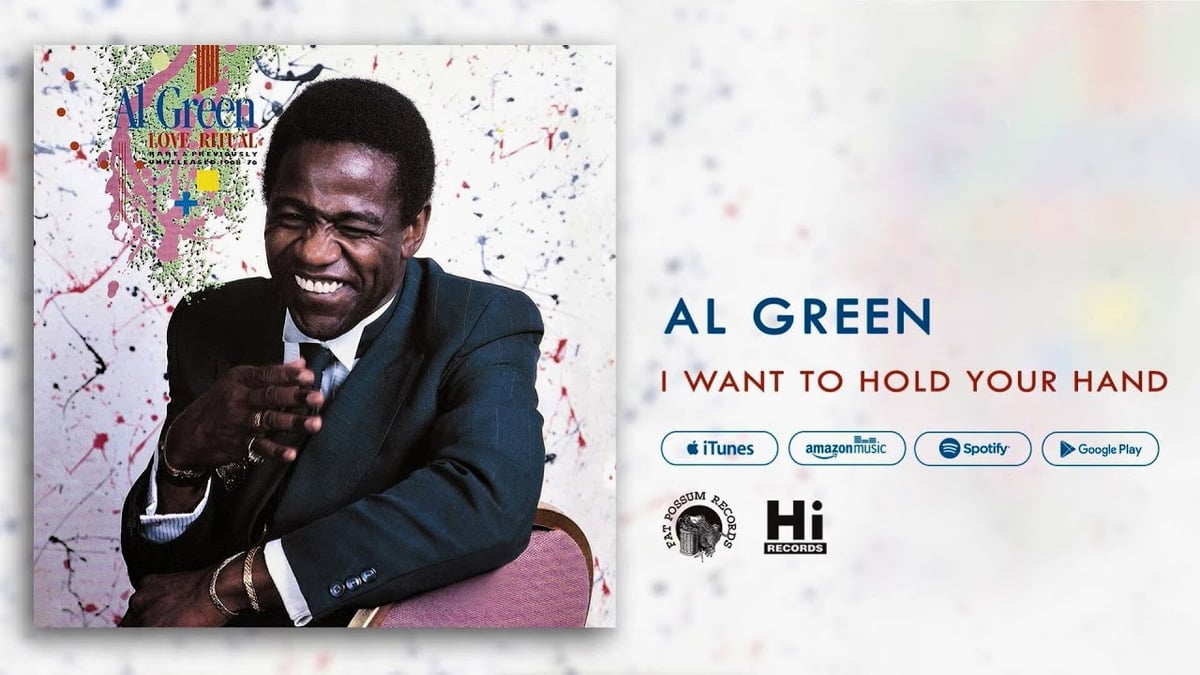


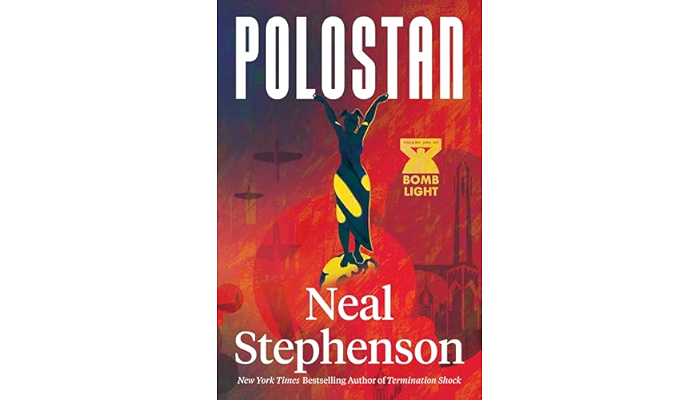










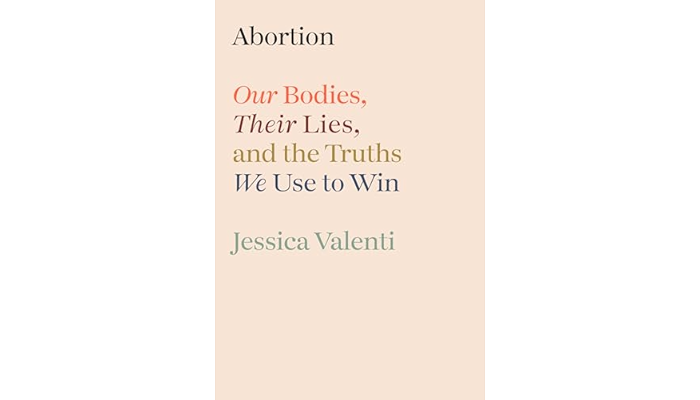





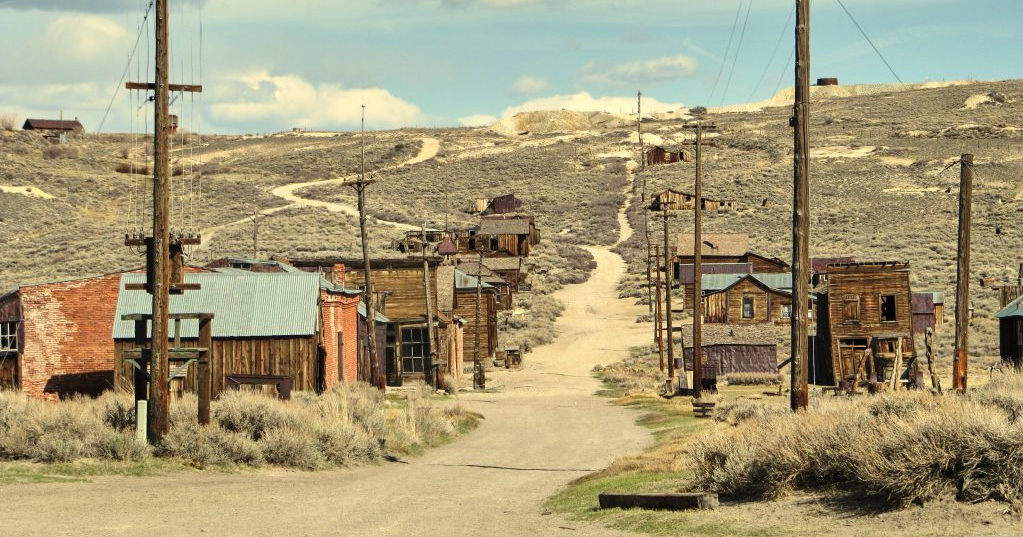


Stay Connected